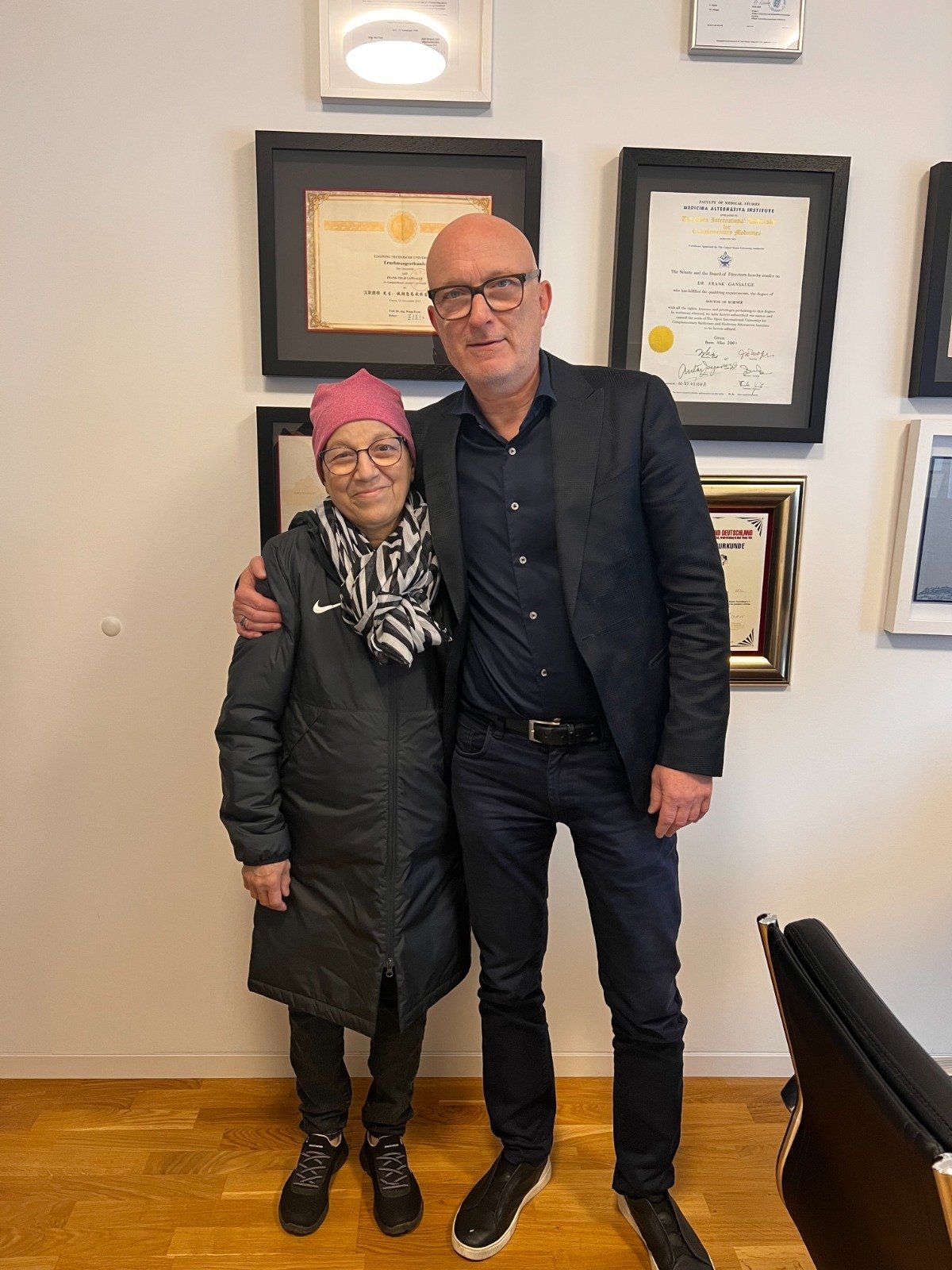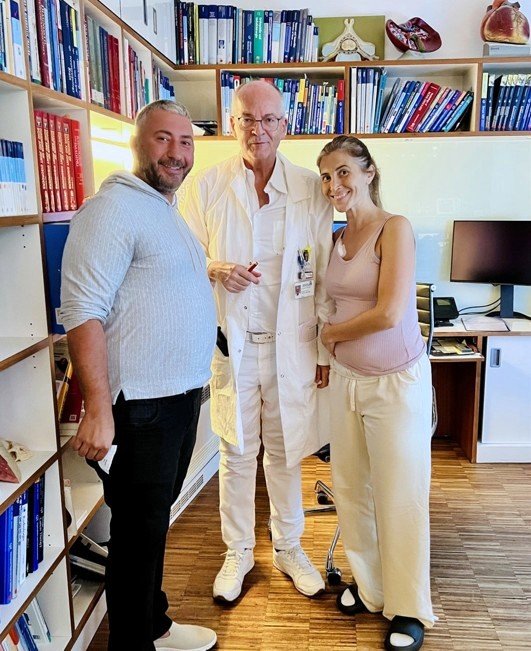
A Klatskin tumor, also known as perihilar cancer, is a type of extrahepatic cholangiocarcinoma, which starts in the area where the right and left bile ducts converge to form the common bile duct.
Klatskin tumor, a rare and aggressive form of bile duct cancer, presents significant challenges due to its location at the junction of the liver’s bile ducts. Germany, a global leader in advanced bile duct cancer treatment, offers innovative therapies and multidisciplinary care, attracting bile duct cancer patients worldwide.
Klatskin tumor, also known as hilar cholangiocarcinoma, is a subtype of bile duct cancer that arises where the right and left hepatic bile ducts converge. This location complicates treatment due to proximity to critical liver structures. Risk factors include chronic bile duct inflammation, primary sclerosing cholangitis, and parasitic infections. Early-stage Klatskin tumors may be surgically resectable, but advanced cases often require systemic therapies. Germany’s hospitals and cancer centers excel in integrating innovative bile duct cancer treatments, such as targeted therapies and immunotherapy, to improve outcomes for bile duct cancer patients.
Bile duct cancer treatment for Klatskin tumors typically involves a combination of surgery, chemotherapy, and radiation, but advanced cases have limited success with standard approaches. Germany pioneers multidisciplinary treatment strategies, including:
German oncologists tailor these treatments to each patient’s tumor profile, ensuring precision in Klatskin tumor treatment.
Advanced Diagnostics for Klatskin Tumor in Germany
Accurate diagnosis is the cornerstone of effective bile duct cancer treatment. German hospitals utilize state-of-the-art diagnostic tools:
German radiologists and pathologists ensure precise staging, optimizing Klatskin tumor treatment plans for bile duct cancer patients.
Innovative Bile Duct Cancer Treatment Approaches in Germany
Germany’s advanced cancer treatment ecosystem is renowned for its innovative approaches to Klatskin tumor treatment. Cancer centers combine conventional and experimental therapies to address this challenging malignancy.
Surgical Advances in Klatskin Tumor Management
Surgery remains the primary curative option for resectable Klatskin tumors. German surgeons perform complex procedures, such as:
These procedures are supported by advanced intraoperative imaging and minimally invasive techniques, enhancing outcomes for bile duct cancer patients.
Targeted Therapy and Immunotherapy
For advanced Klatskin tumors, Germany offers targeted therapies and immunotherapy:
German oncologists use molecular profiling to identify actionable mutations, personalizing Klatskin tumor treatment.
Role of Clinical Trials
Germany’s leadership in clinical trials for bile duct cancer provides access to novel therapies, including next-generation targeted therapies and immunotherapies. These trials explore combinations like checkpoint inhibitors with chemotherapy or gene therapies, offering hope for bile duct cancer patients with advanced disease. German cancer centers drive global research, advancing innovative bile duct cancer treatments.
Why Germany Excels in Klatskin Tumor Treatment
Germany offers distinct advantages for bile duct cancer patients seeking advanced bile duct cancer treatment:
Risk Factors and Prevention of Bile Duct Cancer
Preventing bile duct cancer supports Klatskin tumor treatment efforts. Key risk factors include:
German specialists recommend managing chronic conditions, avoiding environmental toxins, and regular screenings (MRI or ultrasound) for high-risk individuals to reduce bile duct cancer risk.
Multidisciplinary Treatment for Klatskin Tumor
Germany’s multidisciplinary treatment approach ensures comprehensive care for Klatskin tumor:
This integrated strategy, led by German surgeons and oncologists, optimizes bile duct cancer treatment outcomes.
Post-Treatment Care and Quality of Life
Following Klatskin tumor treatment, German cancer centers provide robust follow-up care:
Germany’s patient-centric approach ensures bile duct cancer patients achieve sustained recovery.
Challenges and Future Directions
Klatskin tumor treatment faces challenges, including late diagnosis and tumor resistance to therapies. German researchers address these through:
Future innovations may include AI-driven diagnostics and universal immunotherapy platforms, expanding bile duct cancer treatment options.
Conclusion
Germany’s expertise in Klatskin tumor treatment is transforming bile duct cancer care, offering hope for bile duct cancer patients with this rare and aggressive malignancy. Through advanced bile duct cancer treatment strategies, including targeted therapies, immunotherapy, and clinical trials, Germany delivers personalized, cutting-edge care. German cancer centers, supported by the expertise of doctors and state-of-the-art technology, ensure optimal anti-tumor outcomes and quality of life. As a global leader in innovative bile duct cancer treatments, Germany provides a beacon of hope for bile duct cancer patients, redefining the fight against Klatskin tumor with compassion and innovation.
Frequently Asked Questions
What is Klatskin tumor treatment in Germany?
It involves multidisciplinary treatment with surgery, targeted therapy, and immunotherapy, offered at top German cancer centers.
How does Germany improve bile duct cancer outcomes?
Through innovative bile duct cancer treatments, clinical trials, and personalized care, enhancing anti-tumor outcomes.
Which facilities offer Klatskin tumor treatment in Germany?
Specialized university hospitals and cancer centers provide advanced bile duct cancer treatment.
Are clinical trials for bile duct cancer available in Germany?
Yes, German cancer centers offer trials exploring immunotherapies and targeted therapies.
Is follow-up care provided after Klatskin tumor treatment in Germany?
Yes, including MRI, rehabilitation, and emotional support.
How does Germany compare to the UK/US for bile duct cancer treatment?
Germany leads in innovative bile duct cancer treatments, faster access, and holistic care.
Can Klatskin tumor treatment prevent recurrence?
Targeted therapies and immunotherapy reduce recurrence risk by targeting residual cancer cells.
Does Germany support international bile duct cancer patients?
Hospitals in Germany offer language assistance, travel coordination, and psychological support.
What are the latest advancements in Klatskin tumor treatment in Germany?
Germany pioneers immunotherapy platforms and minimally invasive surgery for bile duct cancer.
How does Klatskin tumor treatment differ from standard chemotherapy?
Unlike chemotherapy, targeted therapies and immunotherapy offer precise anti-tumor outcomes with fewer side effects, enhancing quality of life.
For more information or a free consultation, visit our contact us page.
Kindly complete the form below, and our dedicated team will reach out to you promptly. We look forward to connecting with you soon!
Trierer Straße, 56072 Koblenz, Germany
.webp)
.webp)
 (1).webp)
 (1).webp)


.webp)
.webp)
 (1).webp)
 (1).webp)

